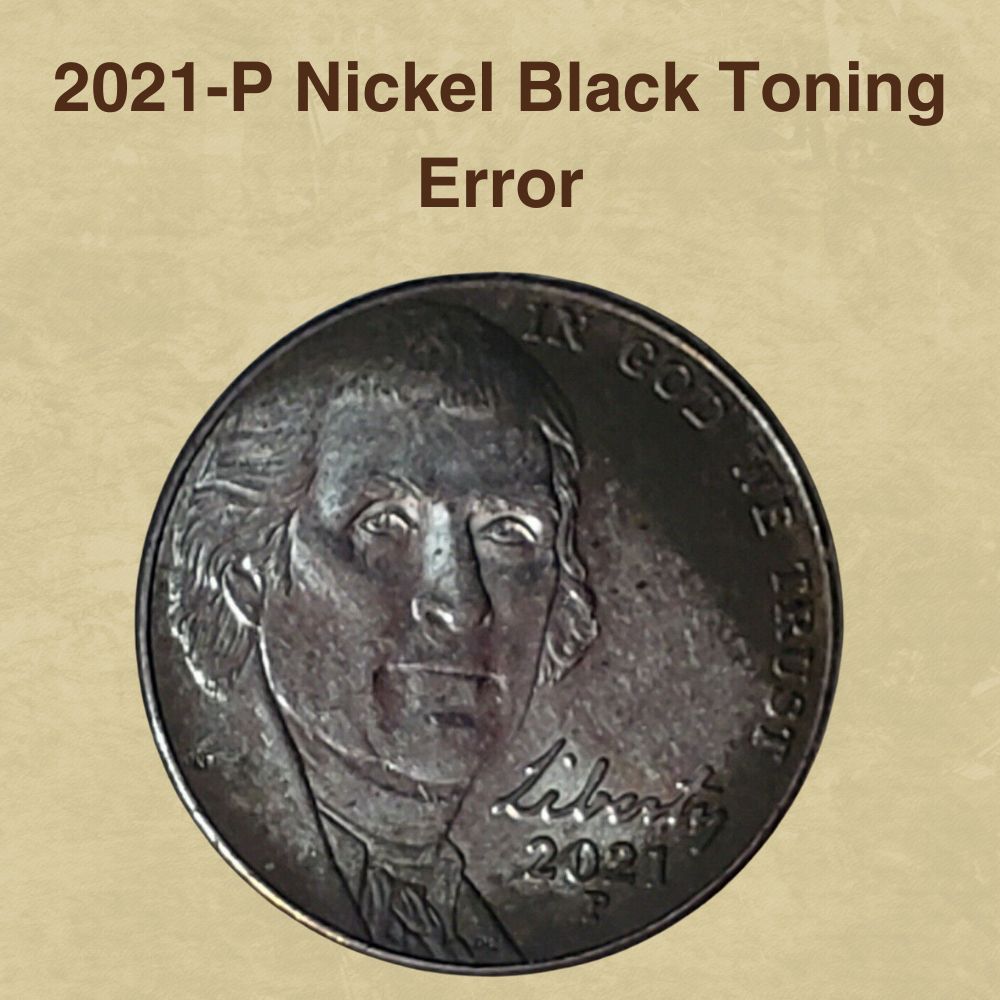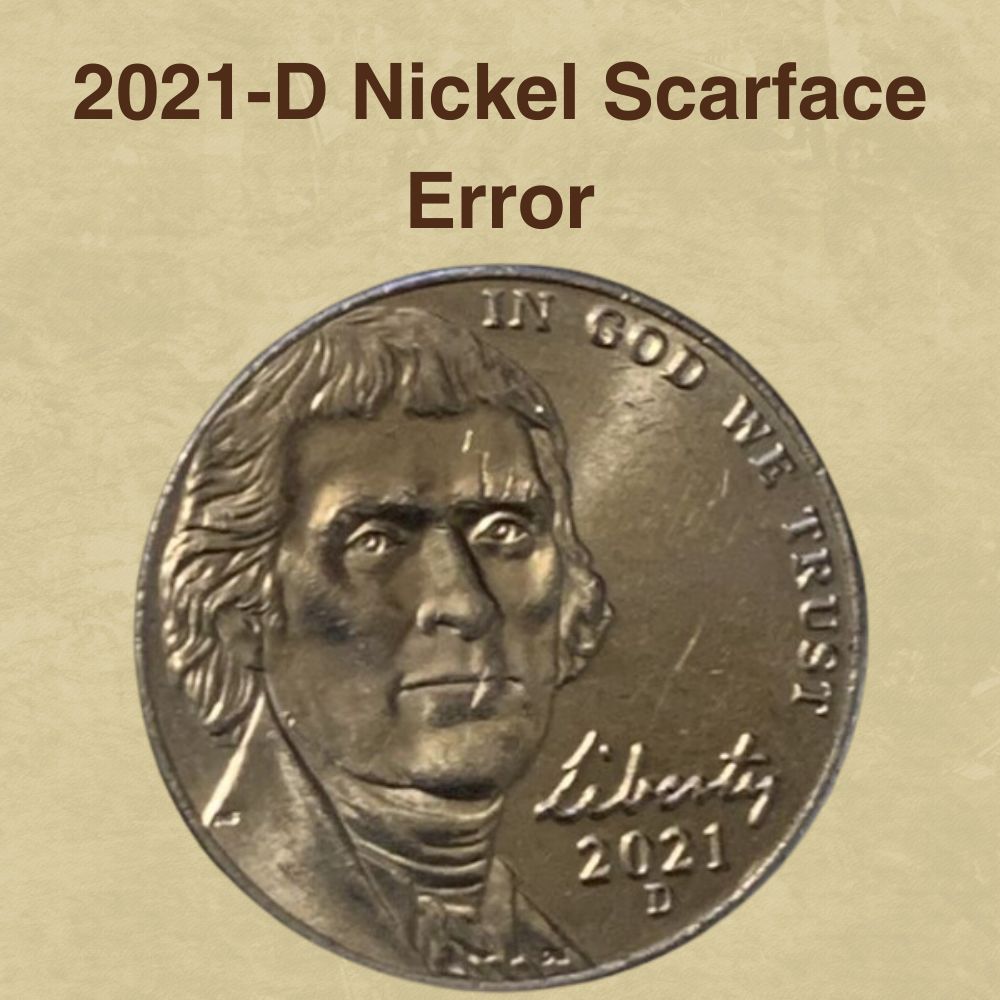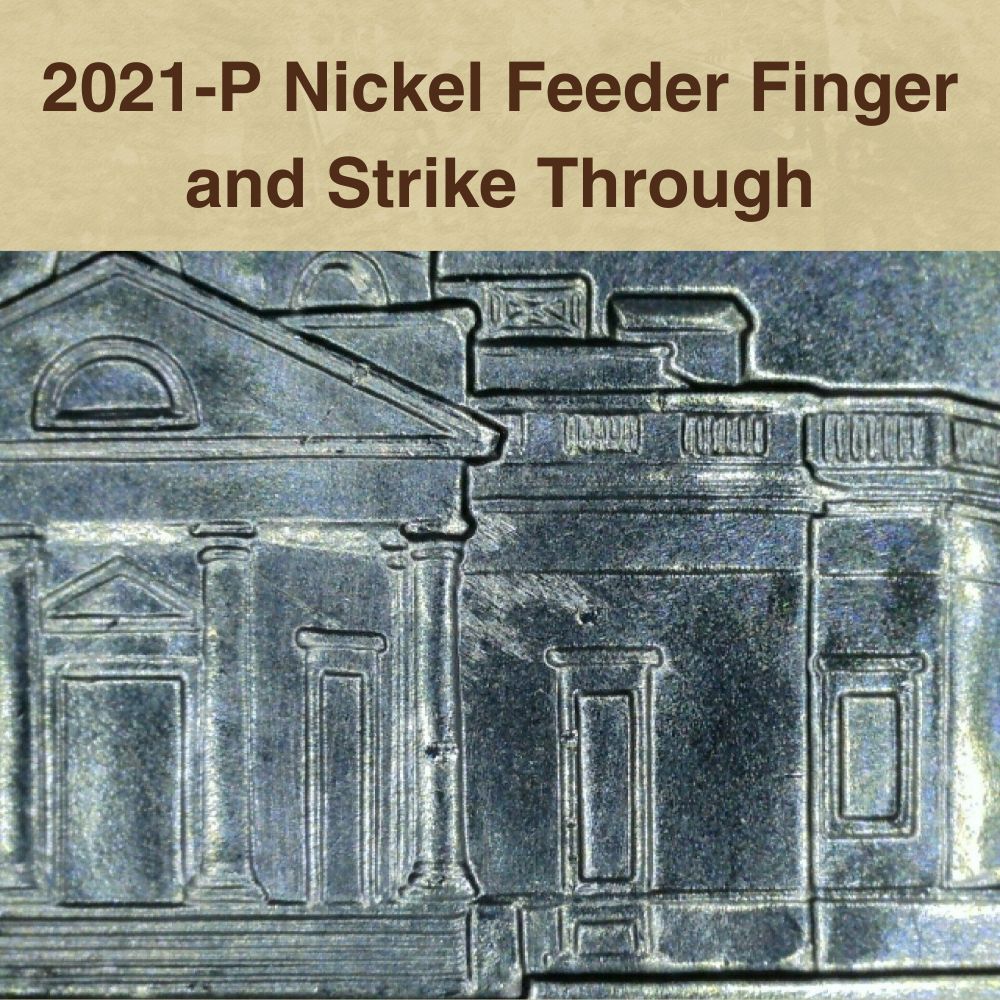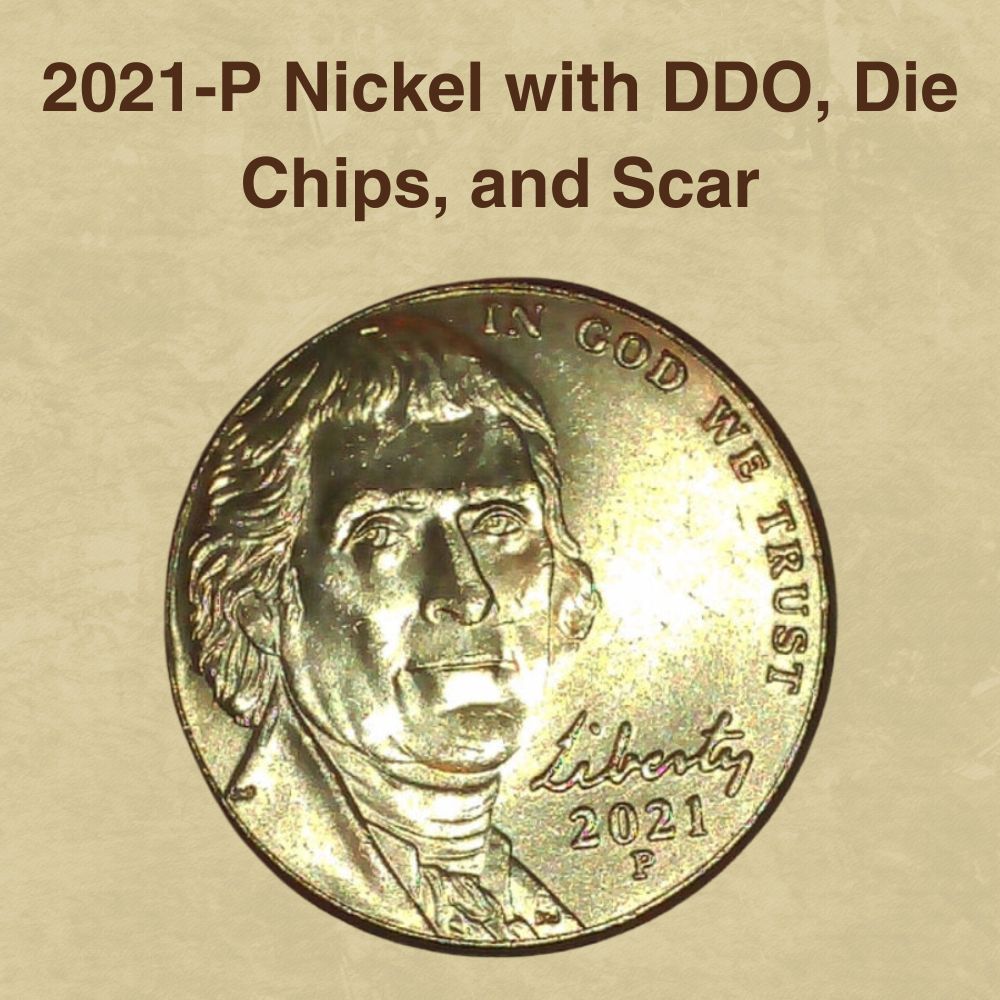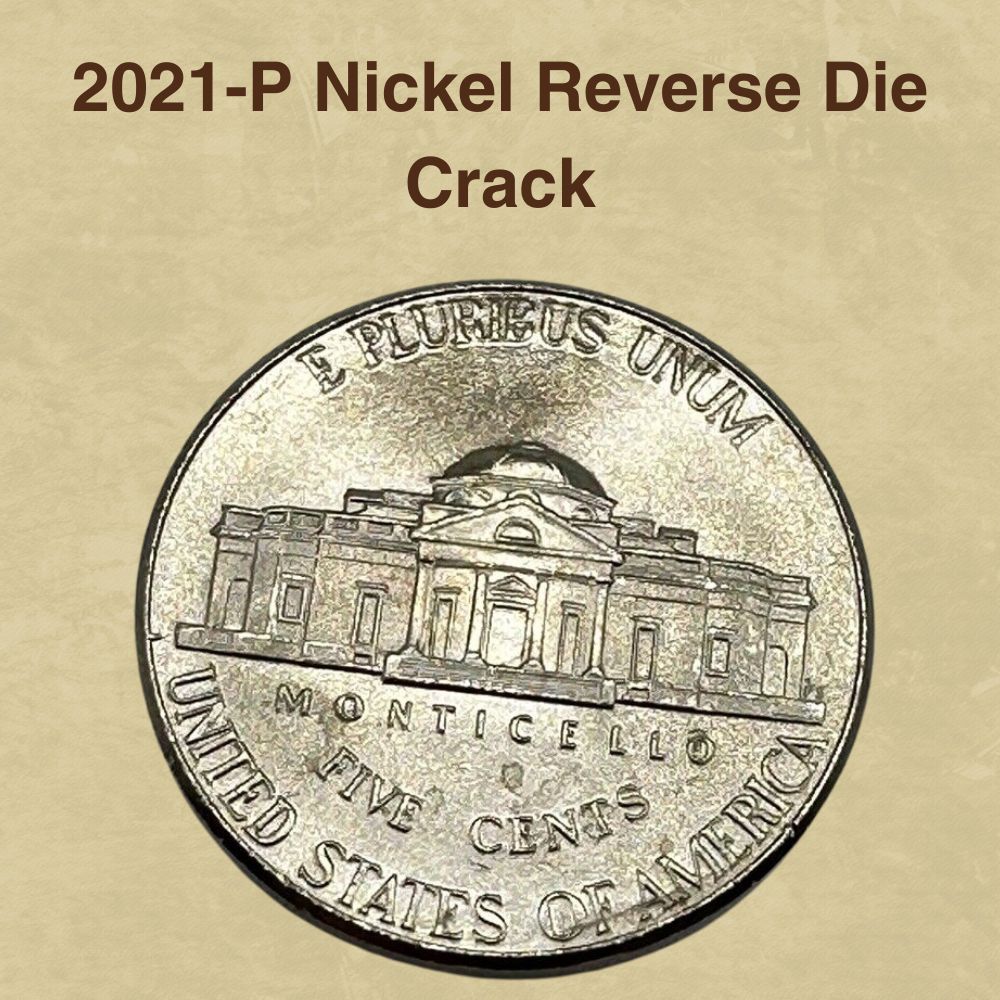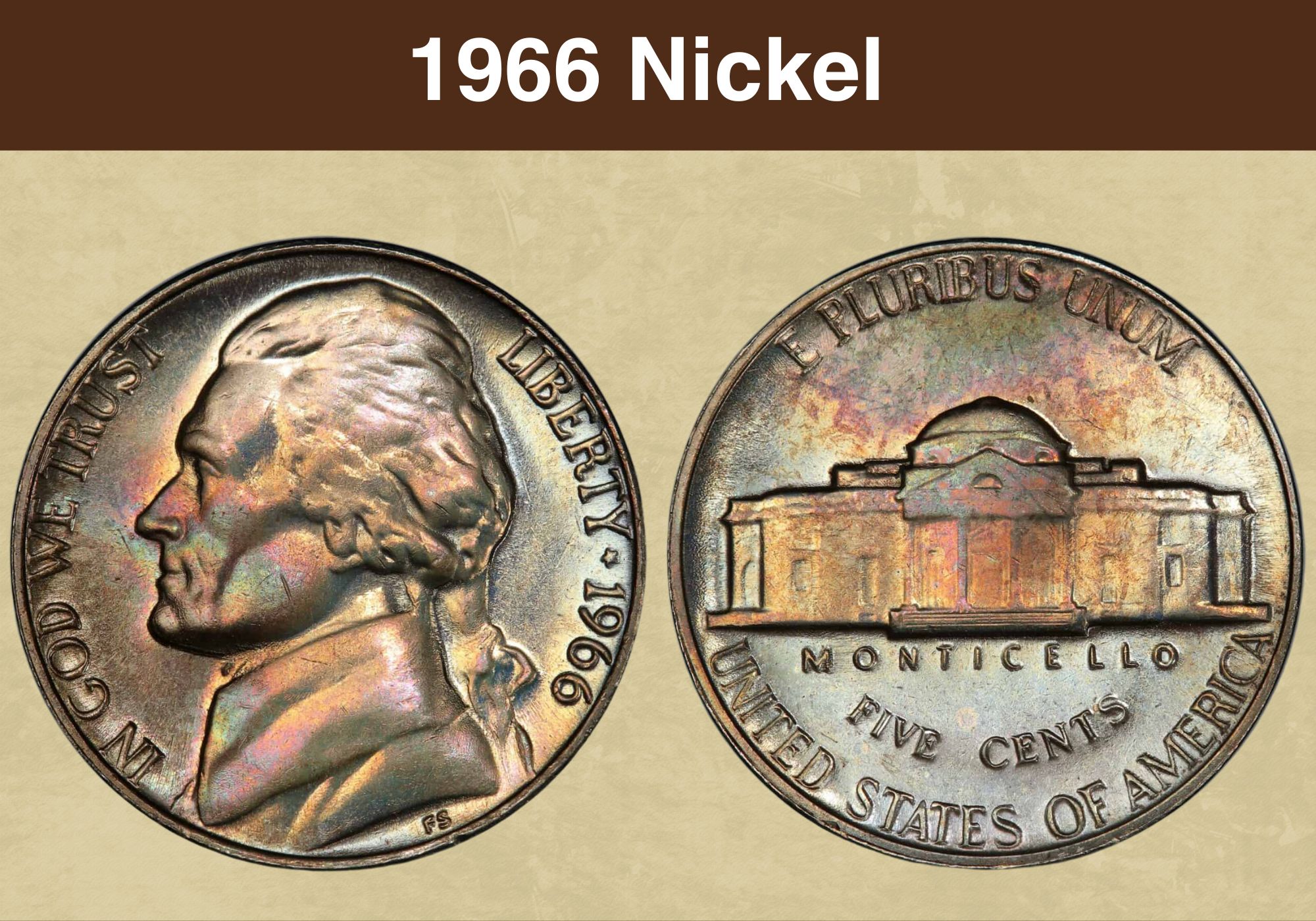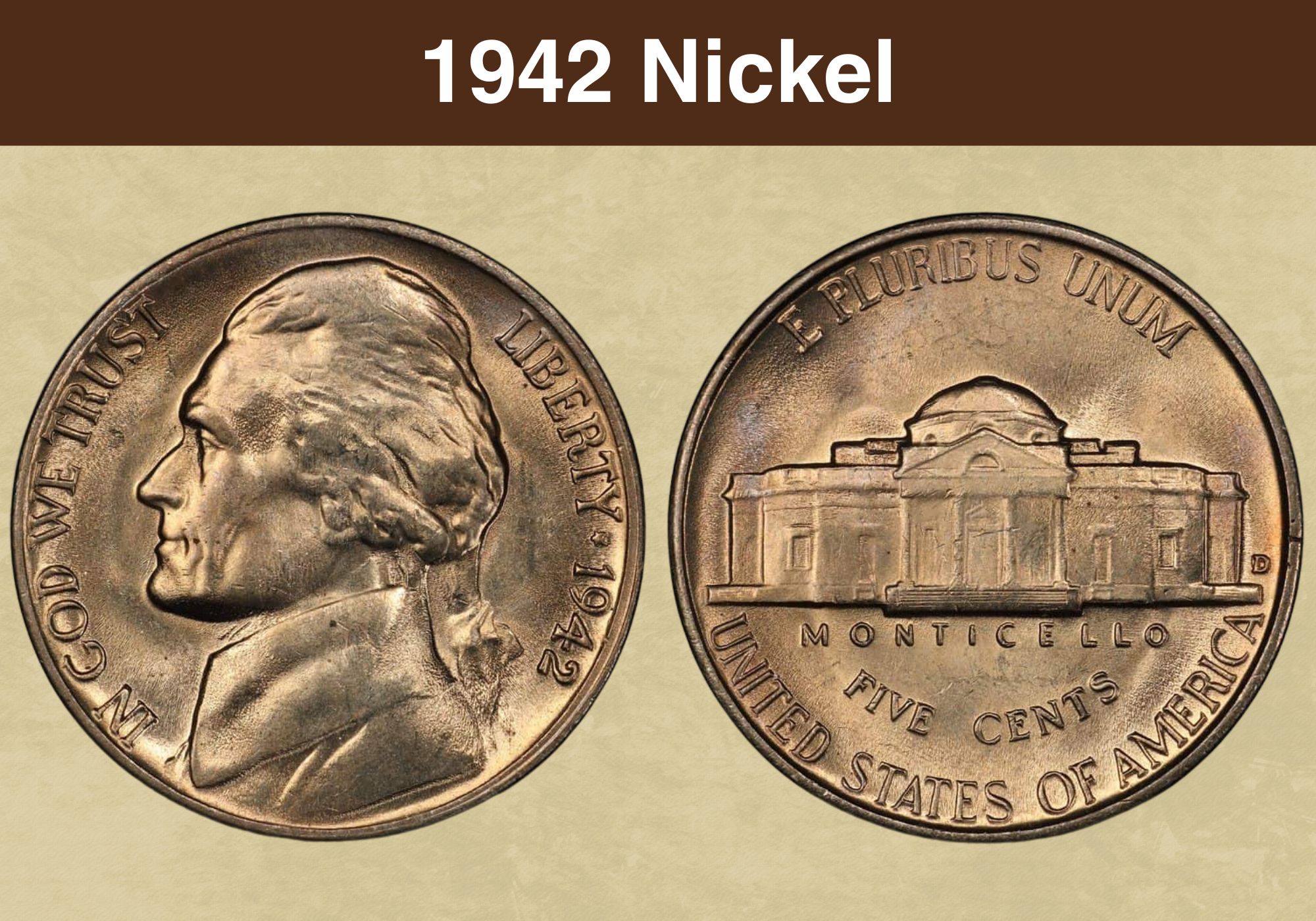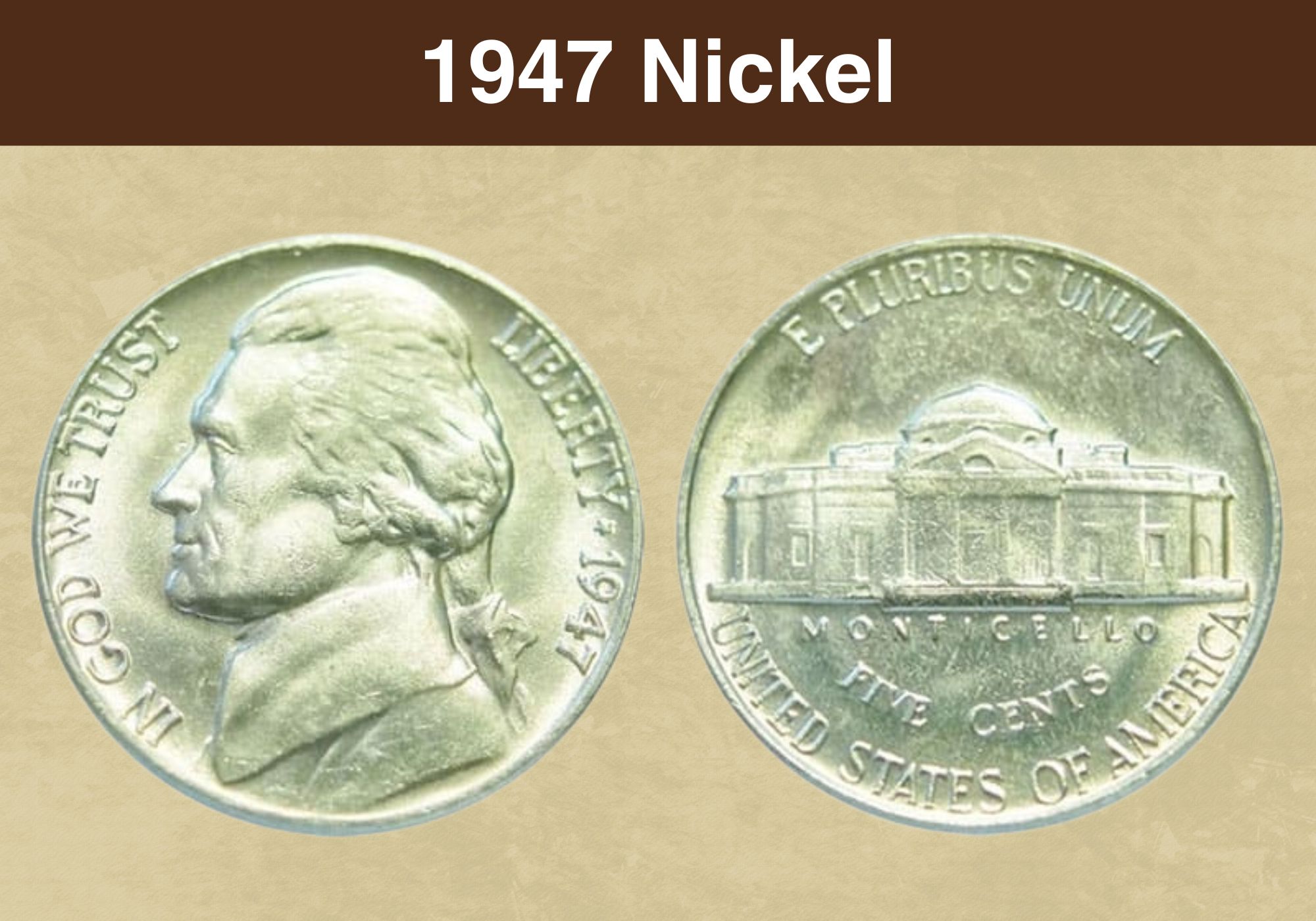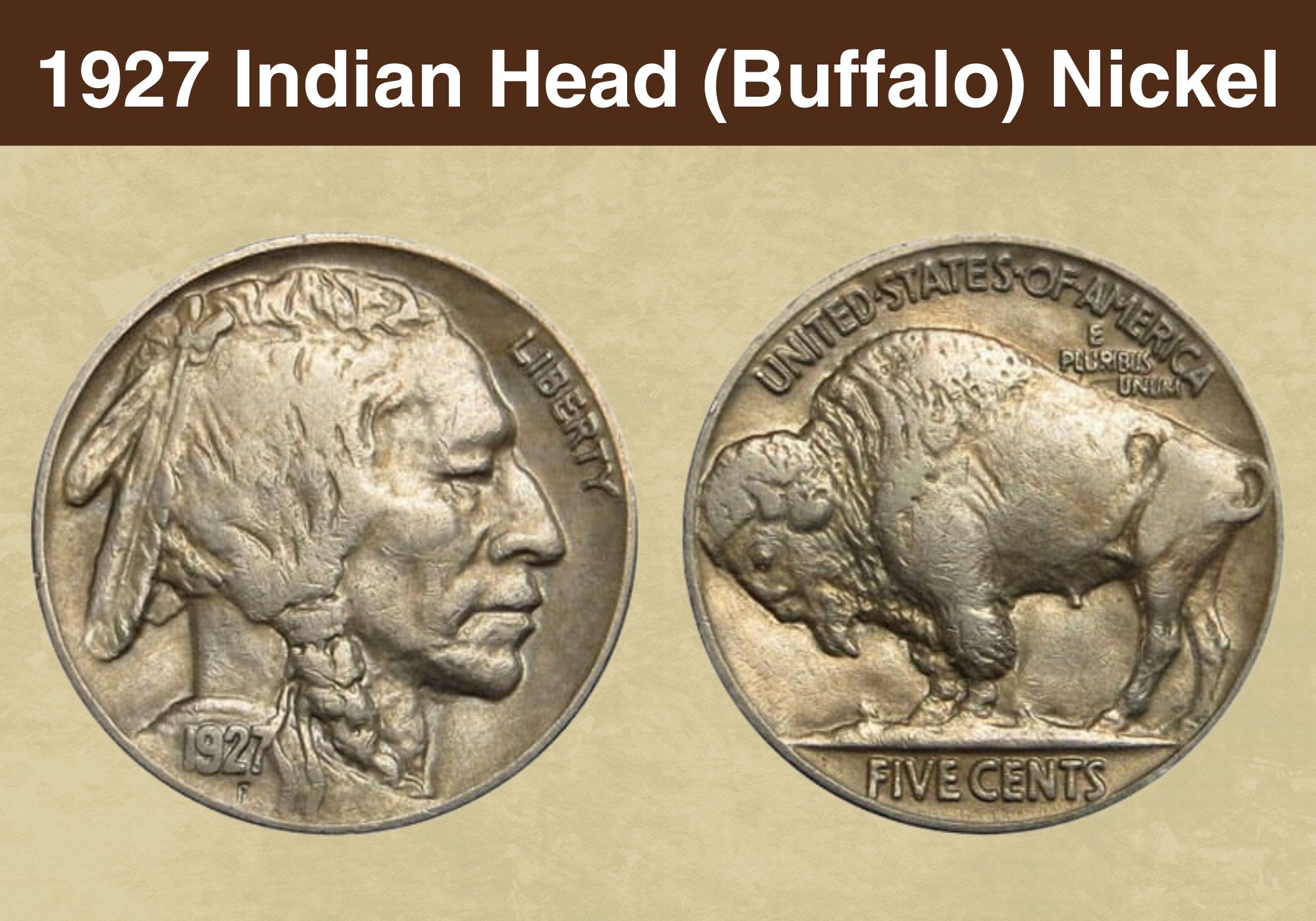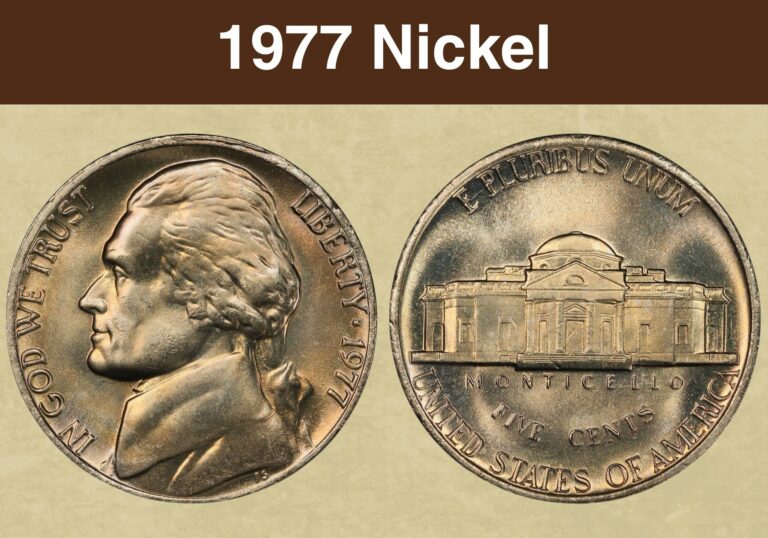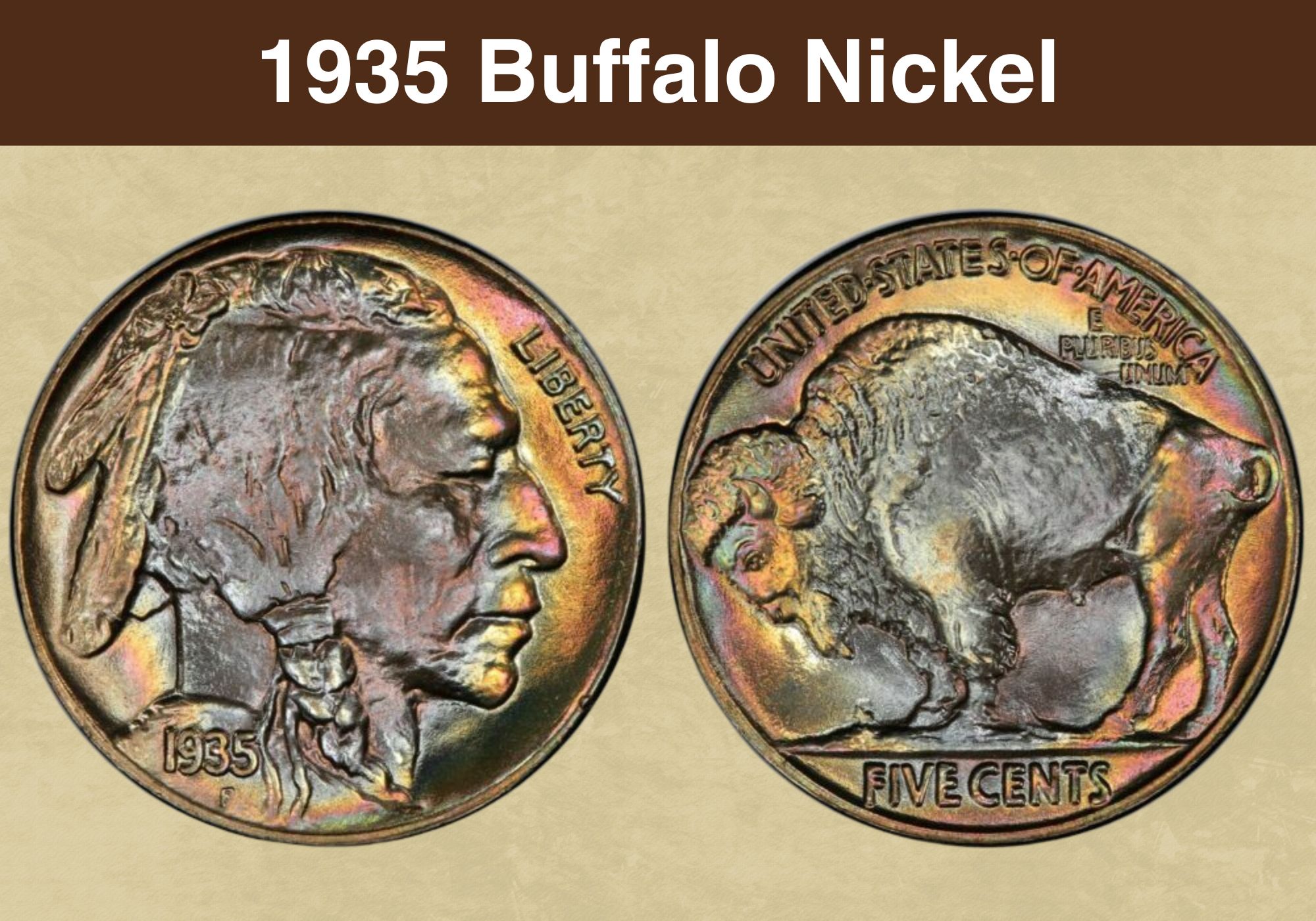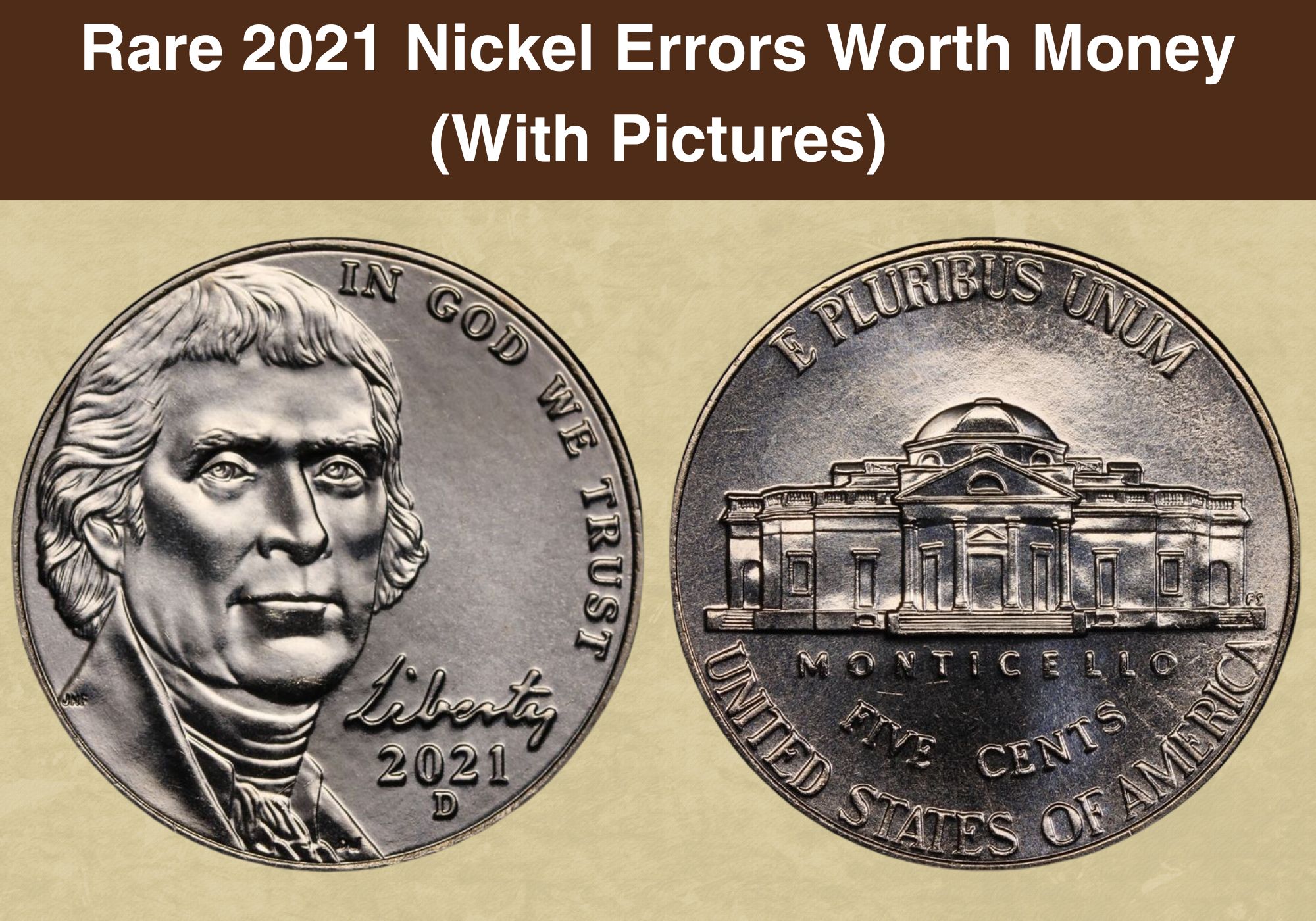
Coin Value Contents Table
- 1. 2021-P Nickel Rotated Die Error
- 2. 2021-P Nickel Black Toning Error
- 3. 2021-D Nickel Scarface Error
- 4. 2021-D Nickel Reverse Cud Error
- 5. 2021-P Nickel Overdate Error 2/1
- 6. 2021-P Nickel Feeder Finger and Strike Through
- 7. 2021-P Nickel with DDO, Die Chips, and Scar
- 8. 2021-P Nickel with Man in Window
- 9. 2021-P Nickel Ghost Coin
- 10. 2021-P Nickel Reverse Die Crack
- 11. 2021-P Nickel with Die Chips on the Obverse and Reverse
In 2021, it costs almost 10 cents to produce a single nickel. But it’s a popular coin that is routinely used by the public so the US Mint continues to strike them. From a collector’s perspective though, mint mistakes can raise the value of your nickel in the resale space. A verified flaw can raise coin prices exponentially, so let’s explore the 2021 Nickel Errors List.
1. 2021-P Nickel Rotated Die Error
It’s hard to find mint mistakes on newer coins because they’re done digitally. In the past, the dies would have to strike the coin at least twice, and the dies themselves were struck multiple times by the hub. This meant you could get easily doubling errors if the die, hub, or planchet moved between strikes. The planchet is the blank disc that gets struck by dies to make a coin.
But newer coins are designed on computer screens and are only struck once so doubling is almost impossible. That said, you can still get a rotated die error like this one here. Usually, the front and back dies are positioned at 180°. But if one die is misaligned, when you flip the coin, you’ll notice the angle is slightly askew. This common error can be off by 30° to 45°.
2. 2021-P Nickel Black Toning Error
Today, most US coins are cupronickel-clad. They’re pure copper in the middle, coated by a mix that’s 75% copper and 25% nickel. This means the total metal composition for these coins is 8.33% nickel and 91.67% copper. The coins look silver though, just like the original currency from the 1790s. And sometimes, the upper layer comes to expose the copper below.
But this is a different type of two-toned coin. Instead of silver and copper, the coin is silver and black. The darkened sections are probably from natural tarnishing in circulation. As the coins are handled, they mix with sebum from human hands, grease from external sources, or dirt so they turn black. On eBay, a two-toned blackened coin can sell for about $50 or so.
3. 2021-D Nickel Scarface Error
Every coin is struck by a pair of dies – one obverse i.e. the front or heads side, and a reverse i.e. the back or tails side. And each die can make hundreds of thousands of coins before it’s out of commission. As the dies get older, pieces start to chip or flake off the die. These are called die breaks, die chips, die cracks, or cuds, and they transfer these mint mistakes to their coins.
Cud errors appear as a scratch on the completed coin, or maybe a section of the coin that has a dent, gouge, or glob of extra metal on the surface. This Denver Nickel has a cud error that forms a lightning-like scratch above one of Jefferson’s eyes. It also has a scratch across his lip, hence the nickname Scarface. It’s not an expensive mint error – eBay vendors want $20.
4. 2021-D Nickel Reverse Cud Error
Die errors tend to become varieties because the same flaw might be copied onto multiple coin batches before somebody notices and changes the die. Also, circulating coins aren’t checked as carefully as collector’s coins. These circulating coins are called business strikes or regular strikes. They’re expected to face a lot of wear and tear during everyday transactions.
Their dies are also used longer than collectible coin dies, so circulating coins are way more likely to have cuds and other die damage. On this coin, the mint mistake is on the back of the coin and it’s easy to spot if you have a good coin microscope or a jeweler’s loupe. Look at the word Monticello below the building on the back. Between the O and N, there’s a clear cud.
5. 2021-P Nickel Overdate Error 2/1
An overdate error is when two mint dates are accidentally struck over one another. They’re usually written as 2/1 i.e. 2 over 1. They’re rare on newer coins since modern currency is digitally minted. But you can find such coins on eBay because people will still pay good money for them. The mistake might be counterfeit though, since the coin hasn’t been graded.
On this eBay sample, a close-up of the coin shows a 1 from 2021 peeking out under the 2 from 2022. It could be mechanical damage, meaning someone may have scratched the coin on purpose. Or it may have developed the scar in circulation. Unless the error is verified by a grading company, it’s not worth much. The eBay selling is asking $120 for the nickel as it is.
6. 2021-P Nickel Feeder Finger and Strike Through
While the modern coin minting process is computerized, some of the older steps are still valid. For example, the rim or retaining collar is now made using an upsetting machine instead of a detachable collar so broadstrikes and partial collar errors are unlikely. But the blank still has to be positioned with feeder fingers so it sits directly between the two dies.
This means a delay in the feeder finger’s timing can still cause mechanical doubling. And it’s still possible to have a double denomination error if you drop a completed coin back into the vat and it gets struck by a new set of dies. On this coin, a mispositioned feeder finger plus a grease error caused a gouge on the right section of the building above the LLO in Monticello.
7. 2021-P Nickel with DDO, Die Chips, and Scar
As we said earlier, doubling errors are unlikely on modern coins because the hub is fed directly from the computer. This means there’s a minimal chance of the die developing a doubling error like a DDO (doubled-die obverse) or DDR (doubles-die reverse). These were more common in the past when hubs made dies manually so the die might move mid-strike.
That said, you can still find online listings for DDOs. These are often unverified errors that haven’t been graded or certified so you can’t be sure they’re authentic. Either way, buyers are still willing to purchase these coins on the secondary market. They’re often speculators and can take the chance that the coins will appreciate. This DDO nickel vendor asked for $800.
8. 2021-P Nickel with Man in Window
The best-known coin grading companies are PCGS (the Professional Coin Grading Service), NGC (the Numismatic Guaranty Corporation/Company), and ANACS (American Numismatic Association Certification Service). If they validate your mint mistake, you can make a lot of money in the secondary market. But without certification, you can still sell iffy ones on eBay.
This next mint error is particularly shifter. The poster calls it a Man in Window error. They claim they can see the silhouette of a person in one of Monticello’s windows. The coin also has a few other minor errors. There’s a die chip on the back left and some circulation damage in the form of scratches and gashes. On the front, the coin has a die chip next to Jefferson’s eye.
9. 2021-P Nickel Ghost Coin
Here’s another 2021 Philadelphia Nickel with a dubious name. They’re referring to it as a ghost coin because the design features on both sides are blurred. The coin is in very poor condition so it probably wouldn’t justify the expense of getting it graded. However, a more accurate term for this mint mistake – if it is a mint error – is a die cap or brockage error.
That’s when the coin before got stuck on the die so it obscured the blank below from fully taking the design when it was struck. This error will sometimes produce a blurry effect on the obstructed coin. Or you might get a coin that has the same pattern on both sides i.e. a two-headed or two-tailed coin with the die cap side being a lot less clear. The seller wants $25.
10. 2021-P Nickel Reverse Die Crack
We’ve talked a lot about die cracks and die breaks. They’re inevitable because every die hits thousands of planchets at high pressure. Typically, the blanks are annealed before they’re struck. This is a process of heating and cooling the coins to make it easier for the die to put the design on the coin. Annealing mistakes might result in a darkened coin i.e. black beauty.
The purpose of annealing is to stop the planchet from cracking when the die hits it. But since die deterioration can’t be prevented, you can still get chips and cuds that leave unsightly gobs of metal on the coin. But cracks and slashes are more common, and on this 2021-P Nickel, the cracks are on the reverse. There’s a cud across the word Of at the bottom of the nickel.
11. 2021-P Nickel with Die Chips on the Obverse and Reverse
When a die strikes a blank, it displaces the metal to transfer the design onto the coin. But if the die has cuds or cracks, parts of its surface have flaked off. This means when the damaged part hits the coin, small bits of metal might spill into the wrong position so you’ll see globs or dents on the completed coin. You might even notice uneven spots or puddle-like depressions.
This coin has die cracks on both the front and the back. A coin with multiple errors can be a lot more pricy than a single flaw. But for the mint mistakes to be truly profitable, they have to be certified. In this case, it’s a reverse and obverse die chip on a coin that isn’t graded so the seller has only asked for $5. That said, coins with multiple mistakes are worth keeping.

